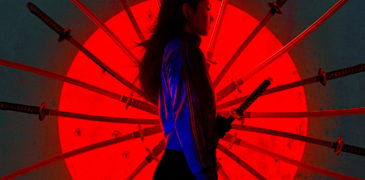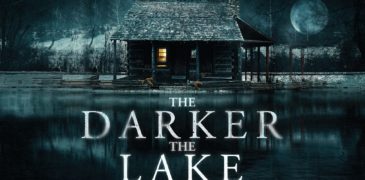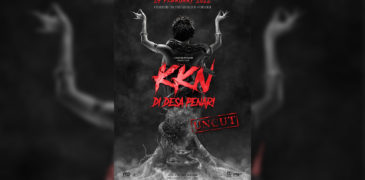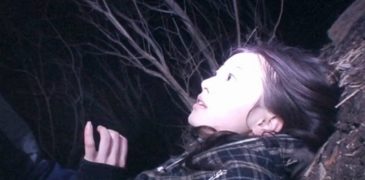
Leon Tolstoy once wrote, “Happy families are all alike; every unhappy family is unhappy in its own way.” While tragic, this notion works wonders in the horror and thriller genre. In fiction, the messier the family, the better the movie. It might not always succeed, but it certainly does in Toshikazu Nagae’s film Saiko! The Large Family. Released in 2009 in a mockumentary format, it tells the story of the Ura family through the eyes of Veronica Addison, a clueless and sometimes slightly condescending foreign journalist.
As time passes and Veronica gets caught in the family drama, strange accidents start to happen to the kids, it seems like the Uras are cursed somehow. However, if you pay closer attention to what’s seen and not said, you will start to notice that the reason for the family’s tragedy is more mundane but no less disturbing.
What is Saiko! The Large Family about?
Saiko! The Large Family begins with Veronica Addison, about as charming as a wood plank, explaining how Japan’s birth rate is declining but large families still exist. Enter the Ura family, a middle-class Saitama family composed of the mother, Tsukasa, and her partner Sumio. They live together in a traditional Japanese house with nothing more and nothing less than seven kids with ages ranging from 24 years old to 5 years old. It is crowded of course but, at first glance, they seem an overall happy family.

As they prepare breakfast, several issues begin to emerge, the intro cards for each family member reveal that three children are missing: the oldest daughter, the oldest son, and the third son. Where are they? And why does everyone seem so blasé about their absence? Just as the movie seems to get back on track with a hilarious scene of Veronica being scandalized by natto beans, the first cracks in the surface appear.
Rie, the 16-year-old daughter, physically and verbally abuses Sumio in front of everyone. None of the older children defend him; if anything, they go along with the attack or simply don’t intervene. As later explained, Tsukasa’s husband disappeared 7 years ago. She met Sumio years later, and while he is the father of the two youngest children and they live together, they are not legally married yet. As a few head interviews confirm, the rest of the family is not too fond of him. Still, Sumio is determined to win over everyone as he always wanted a family since his parents died in his childhood.

Veronica feels she has an emotive tale of a family struggling to blend, but the reality is more complicated. While she grapples with Japanese societal terms and is unwilling to look beyond her internalized exoticism, a viewer more familiar with the Japanese language or simply wise enough to pay attention will notice hints about the real family dynamics at play.
The oldest son, a shut-in, continuously writes a message on paper that could be interpreted as “Mom is awesome” or “Mom is psycho,” as “saiko” can be read as both. The oldest daughter, recently rescued from a trafficking situation, appears happy now with Sumio but cooks for him every day a meal that her father used to enjoy, adding a weird white powder each time. References to accidents involving other children, including the death of the third son, and other tragedies, enhance the idea that something is wrong.
To be more precise, it seems the mother is what is wrong. She is overly focused on health insurance and oddly protective of the human-sized vegetable patch in the backyard. It seems she has been the puppet master of the family all this time, but now that her children, including the rebellious Rie, have found out that Sumio is actually a loving father, will they keep going along with the mother’s schemes?

Is Saiko! The Large Family a sequel?
Saiko! The Large Family is, in actuality, a sequel to a series called “Banned from Broadcast,” originally released in 2003 by Fuji TV. Each installment is a mockumentary featuring supposed TV episodes that were not aired as intended, focusing on interviews with people facing difficult situations like domestic violence, harassment, or stalking.
In the second episode, titled Banned 2: A Cursed Big Family, the Ura family is featured for the first time, as acknowledged by one of the siblings in the movie. Here, the plot focuses on the supposed curse that afflicts the family, leading to tragedies such as the death of the third son. However, this is revealed to be a red herring, as the real source of their misfortunes is the bio dad, a violent deadbeat. While A Cursed Family is not necessary to understand Saiko!, it provides more context and adds a layer of dread when we see that Sumio might be a new target, despite him being a genuinely nice guy.

Final Thoughts
While being a sequel, Saiko! offers the entire story, but the viewer must pay close attention and connect the dots, whether they are subtle wordplay or blink-and-you’ll-miss-it scenes. This aspect adds to the intrigue and depth of the narrative, keeping the audience engaged as they uncover the layers of the plot.
We may never know exactly what is wrong with the Ura family, and that’s perfectly fine. Witnessing a horrific tale of dysfunction unfold before our eyes without jumpscares or info dumping is certainly refreshing. We recommend watching Saiko! The Large Family and then diving into YouTube comments to find crucial time stamps and explanations to unravel the mystery. If not, you can always make fun of Veronica Addison and her blissfully ignorant journalism skills, that’s also quite amusing.
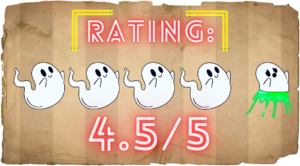
More Film Reviews
There is probably no better place to start discussing Yakuza Princess than with its setting of Sao Paulo, Brazil. As the film quickly points out in its introduction, Sao Paulo… Breathtaking vistas, an Austrian setting, Elyse Levesque as a detective with a slight German accent, a cursed game, and a mix of Nordic noir and supernatural horror elements: this is… Indonesian horror has been receiving some attention in recent years, mostly thanks to some pretty good entries from the country. So it is not surprising that the said country’s highest-grossing… I want the truth. No matter how terrifying. I want the truth. ~ Masafumi Kobayashi When I think about the genre of mockumentaries, the first image that comes to my… Pig Killer is a 2022 American horror thriller, written and directed by Chad Ferrin. The film is a retelling of one of Canada’s most prolific serial killers, Robert William “Willy”… Ever since I was a small child, I have had a fascination with monster movies. They bring back nostalgic memories of sitting for hours on end, watching black and white…Yakuza Princess (2021) Film Review – Classic Yakuza Action with a Fresh Perspective
The Darker The Lake (2022) Movie Review – The Fear Frequency
KKN di Desa Penari (2022) Film Review – A Bloated and Overhyped Bore
Noroi: The Curse (2005) Film Review: Into the Twilight Zone
Pig Killer (2022) Film Review – Canada’s Most Prolific Serial Killer
Spookies (1985) Film Review: These Spooks Were Made for Walkin’
Hi everyone! I am Javi from the distant land of Santiago, Chile. I grew up watching horror movies on VHS tapes and cable reruns thanks to my cousins. While they kinda moved on from the genre, I am here writing about it almost daily. When I am not doing that, I enjoy reading, drawing, and collecting cute plushies (you have to balance things out. Right?)

